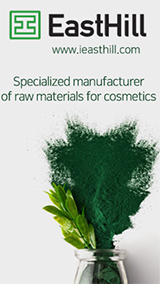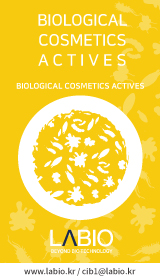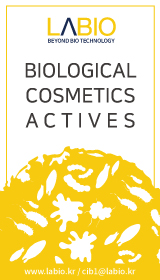
Since June of last year, the Korea Cosmetics Association has formed a public-private consultative body for regulatory innovation with the participation of experts from the Ministry of Food and Drug Safety, related institutions, and academia, and as the first step for a new leap forward for K-beauty, global standardization and currentization of regulations related to the cosmetics industry carried out activities for
Through six months of consultative body activities, the details of the innovation targets were greatly changed under the premise of △ conversion to a global negative system for fostering innovative and creative brands △ introduction of the K-beauty global safety management system △ establishment of a global standard quality management system. derived
The basic requirement and the biggest challenge for such regulatory innovation is that the current cosmetics law must be 'completely revised' to the level of 'newly enacted'. This not only has to go through the process of proposing a revision (proposal) and passing it in the plenary session of the National Assembly, but also needs to leave open the possibility that the initially intended direction and purpose may change in the process.
Regardless of future schedules, Cosmorning reviews the regulatory innovation tasks and directions presented by the Cosmetics Association through discussions with the Ministry of Food and Drug Safety for each issue and publishes detailed plans for them in series. The second subject of discussion is the full review of the functional cosmetics screening and reporting system that has been implemented so far along with the introduction of the Cosmetics Act. <Editor's Note>
Among the various factors and challenges for the crisis that K-Beauty is experiencing in 2023, the part that is causing the hottest controversy is the 'functional cosmetics pre-examination and reporting system'.
The functional cosmetics review and reporting system, which came into effect with the enactment of the Cosmetics Act and has become a core content of the Cosmetics Act until now, however, 23 years later △ inhibits product development with strong innovation and creativity △ delay in launching new products △ ‘Uee’ around the world It is pointed out as a major factor in the prior and national management system (with China) and the loss of corporate will to invest in R&D.
Under the recognition of this reality, the Korea Cosmetics Association and some in the industry are raising their voices that the cosmetics regulatory system should be transformed into a 'global regulatory system' through gradual improvement and final abolition of the current functional cosmetics pre-examination and reporting system through public-private consultative body activities. am.
Impeding rapid release of unique and innovative products
The conclusion drawn from the activities of the public-private consultative body is that the management regulatory system, which can be represented by the current functional cosmetics pre-examination and reporting system, limits the market leading function through the development of products full of innovation and creativity and the rapid release of these products. am.
In other words, most of the basic cosmetic products that Korea is competitive in, such as whitening and wrinkle improvement, are included in the functional cosmetics category. This requires prior review by the government (Ministry of Food and Drug Safety) when developing products with new active ingredients, unique formulations, or new technologies.
As a result, it is becoming the biggest obstacle to the rapid release of innovative products that can meet rapidly changing global trends and global consumer needs that require various functions.
In this regard, the Korea Cosmetics Association said, “In the recent crisis that K-beauty is facing, if the cosmetics industry ecosystem does not quickly transform into an environment where innovative products that reflect unique and special ideas can be launched based on free research and development, △ the Chinese market is local It will be pushed out by products and global luxury brands, △ In other countries, the Korean Wave will cool down and the popularity of K-beauty will also fade, and the sense of crisis will never be exaggerated.”
Limitation of government-led efficacy management according to industry growth
It is an undeniable fact that the Korean cosmetics industry has grown rapidly under government-led management. In fact, the government (Ministry of Food and Drug Safety) has been carrying out management such as △ ensuring the safety and effectiveness of functional cosmetics through examinations, △ implementing certification for natural and organic cosmetics, and △ preparing quality control standards that companies must comply with through laws and regulations. .
This is enough to be evaluated as having made a significant contribution to achieving development in both quality and quantity by contributing to raising trust in cosmetics while dispelling domestic and foreign consumer concerns about Korean cosmetics at a time when the industrial base was poor.
However, in the current situation, which boasts the third largest export in the world, △ Rather, these regulations hinder the development of innovative products, △ Excessively delay the release of new products due to various screening and certification procedures, and △ Cosmetics-related issues (consumer damage, etc.) ) in the event of an accident, making it unclear where the responsibility lies (whether the responsibility for the accident lies with the government that guarantees the safety and effectiveness of the raw material or product, or with the company that produced the product using the raw material) △ impedes prompt dispute resolution, etc. It is also undeniable that the reality that it is showing its limitations. In the end, the point that the positive effect of the first system has already faded is gaining persuasiveness.
In particular, due to the characteristics of cosmetics, which are sensitive to trends and have a short life cycle, it is difficult to keep up with the ever-changing needs of global consumers and changes in advanced technologies under the current regulatory system.
In the end, it is argued that the first step for K-beauty to take a new leap forward is to transition to a global regulatory system.
Management similar to pharmaceuticals that cannot save the characteristics of cosmetics
The pre-examination and reporting system for functional cosmetics, which was introduced with the enactment of the Cosmetics Act in 2000, was introduced by applying the management regulations for pharmaceuticals at the time. It has been established as a system to review the safety and effectiveness of main ingredients, such as pharmaceuticals, and has undergone changes.
The claim of the Korea Cosmetics Association is as follows: Drugs show efficacy and effectiveness in the treatment and prevention of diseases through the pharmacological action of their main ingredients, but cosmetics show their effects through the combined action of all ingredients used in a product. is difficult to reflect.
In particular, as recent product trends and consumer needs focus on plant ingredients rather than chemical ingredients, product development through a combination of various plant ingredients is actively being carried out. ) makes it very difficult to pass the examination.
Mass production of standardized products, a factor in the loss of differentiation and competitiveness of functional cosmetics
Most of the currently released functional cosmetics are products using the same effective ingredients as notified. Even in the domestic market, 'functional cosmetics' itself has already lost its differentiation and competitive power. Currently, these pre-screening schemes only increase compliance costs for both governments and businesses.
The functional cosmetics system places the responsibility of verifying product effectiveness on the government. Therefore, in the case of innovative products using new effective ingredients, the verification process and requirements are inevitably complicated.
As a result, rather than developing products based on innovation and creativity, companies mass-produce so-called 'Me Too products' using certified ingredients that can be easily recognized as functional cosmetics, acting as a major factor in the expansion of K-beauty.
In fact, about 95% of functional cosmetics are reported items, and among these reported items, the statistics that more than 90% of the items (reported No. 1) using the same efficacy notification ingredients are sufficient as a basis for this claim.
Reduced corporate self-efficacy and safety verification capabilities… Decreased motivation to invest in R&D
For the effectiveness of cosmetics, manufacturing and sales companies should be held accountable. However, the government guarantees and verifies the functional cosmetics system by legislating the pre-examination and reporting of the specific efficacy and function of the product.
As a result of this, the company's dependence on the government for efficacy and safety verification has deepened, leading to the side effect of reducing the efficacy and safety verification capability of the company itself.
Even if a company develops a product with a new active ingredient or new technology and obtains significant results through clinical trials by investing huge amounts of money, the functional cosmetics system must go through a complex government verification process and procedures again before a product can be released. limit
It is only natural to focus on mass production of products that use the same effective ingredients that are easily recognized as functional cosmetics rather than developing innovative products.
In addition to this, even if an innovative product is released after passing through a complicated screening process, the reality of facing a wall again that only the evaluated efficacy and effects can be displayed and advertised becomes an obstacle to expressing various functions.
Lee Myung-gyu, vice chairman of the Korea Cosmetics Association, pointed out, “As a result, it is difficult to launch various innovative products and express advertisements in the market, which is an absolute factor that reduces the willingness of companies to invest in R&D.” The reality that it is almost impossible to find is clearly proving this,” he repeatedly emphasized.
Overseas cases – except for China, government pre-screening is the only
Currently, except for China, no country in the world, including Europe and the United States, operates a governmental pre-examination and approval system for cosmetic efficacy. Companies are responsible for proving and managing the efficacy and function of products, while the government focuses only on safety management.
Regarding the efficacy of cosmetics, the government's pre-examination and permission are 'uui' for China's 'special cosmetics' and Korea's 'functional cosmetics'.
Transformation of the global regulatory system builds an innovative and creative ecosystem
In order for the cosmetics industry to take a second leap with the goal of becoming the world's No. 1 exporter along with the Korean Wave, which has recently been blowing again, an innovative and creative ecosystem that can develop innovative technologies and products that will lead global trends must be created, which is regulated. Innovation is desperately needed.
The core of regulatory innovation is to abolish the government certification system, such as the functional cosmetics screening and reporting system and natural and organic cosmetics certification, which are operated as a preliminary management method led by the current government, and the private autonomy of hype advertising through the introduction of an autonomous advertising dispute resolution organization. It aims to transform efficacy management into a global advanced regulatory system, such as strengthening adjustment and purification functions, while strengthening the product safety management system so that consumers around the world can safely use K-beauty.
Along with this, the Cosmetics Association and the public-private consultative body are working to improve the cosmetics industry’s preparation and regulatory compliance following innovation in the cosmetics regulatory system. It proposes an alternative that requires a review of the method of converting operated items to the responsibility of demonstrating corporate efficacy first, and then sequentially converting them △.
In addition, it is pointed out that it is necessary to review measures to gradually expand and introduce the safety management of cosmetics for infants and children, starting from functional cosmetics items that are to be abolished.






